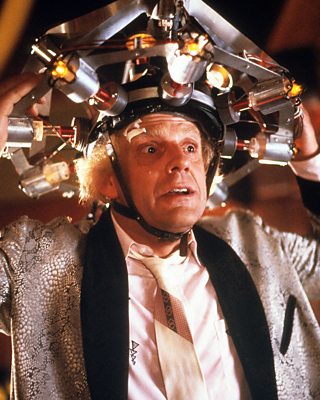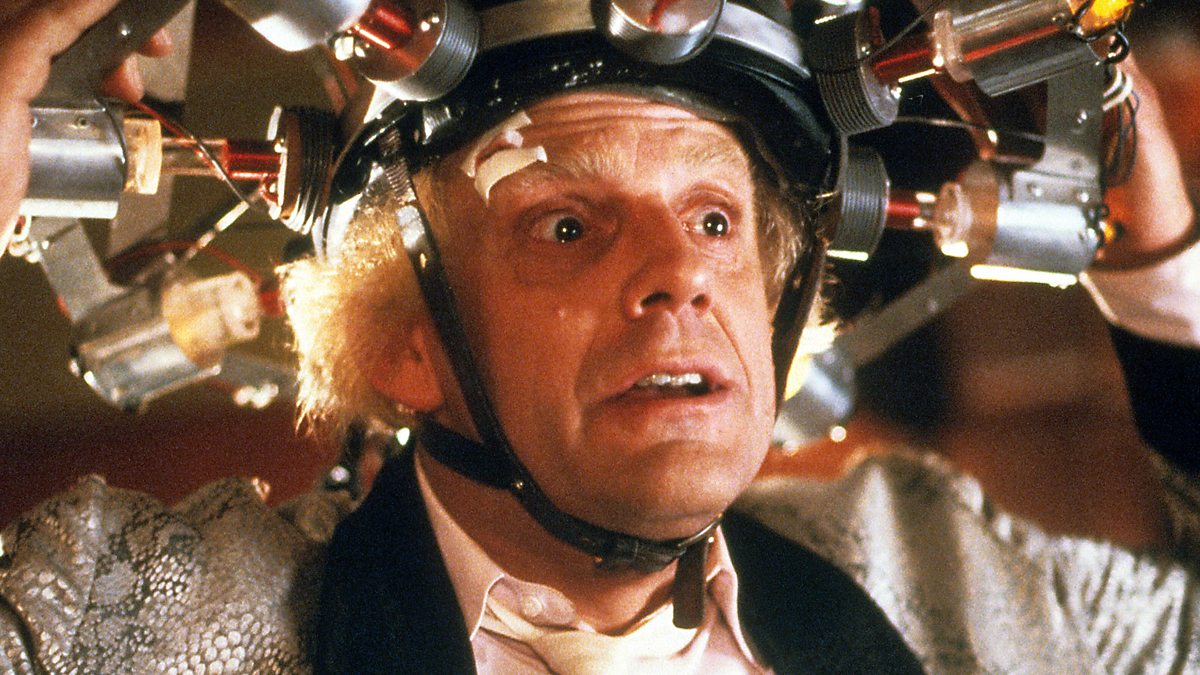Back to the Future
There were time travel movies before Back to the Future came out in 1985 – an adaptation of HG Wells’ The Time Machine won an Oscar in 1960 – but Robert Zemeckis’ classic heralded a golden era for the genre. It’s the story of Marty (Michael J Fox), a teenager who accidentally goes back in time and nearly ruins his own present.

Christopher LLoyd as Doc Brown in Back to the Future.
Professor Sean Carroll, a theoretical physicist at John Hopkins University, who knows a thing or two about time travel science, says: “Back to the Future is amazing. It’s a lot of fun. As time travel, it makes absolutely no sense at all.” It all comes down to that family photograph, in which siblings begin to fade from existence as Marty changes history. “Why does the photograph start to fade at that moment in time?” asks Carroll. It may not be logical, but does that make the film anything less than brilliant? Absolutely not.
Looper
Rian Johnson is one of the greats when it comes to cinematic puzzles. In his Knives Out movies, he constructed knotty murder mysteries that confounded all but the most perceptive sleuths. In the 2012 movie Looper, he turns his incredible mind to time travel, for a story about an assassin who’s ordered to murder his future self.
“It uses time travel as a device to explore big themes of free will and fate,” says Mark. It’s a complicated time logic, but Johnson treats it lightly and, as Kermode says, keeps the plot moving so quickly “it never… allows the audience to go, ‘Hang on a minute.’” As Johnson says, science shouldn’t always be the focus. “It’s about making sure the story logic makes sense in a way that the audience will stick with you,” he says. “That’s much more important than whether the flowchart makes sense.”
Listen to Rian Johnson talking about his Knives Out movies in this episode of Screenshot
Avengers: Endgame
In the 2019 blockbuster Avengers: Endgame, Iron Man and his team of superheroes have to travel back in time to find infinity stones, which will allow them to defeat supervillain Thanos and save the world.
The filmmakers brought on Professor Sean Carroll to advise them on how to make it as ‘accurate’ as possible. “I explained that the safest thing, by far, to do is to travel back to the past but never change things in a way that would be noticeable,” he says. “So it’s mostly consistent.”
Radio 1’s Ali Plumb meets the cast of Avengers: Endgame
Superman
Professor Carroll says there is the tiniest grain of scientific truth in the time travel in the 1978 Superman. At the end of Richard Donner’s classic, Superman fails to save Lois from a horrible accident. Distraught, he flies around Earth so fast that it spins in the opposite direction, reversing time, allowing him another chance to rescue his love.
“There’s the slightest wisp of inspiration for that from real physics,” says Carroll. “When objects in the astrophysical universe are rotated fast enough in the right way… you can possibly go backwards in time.”










